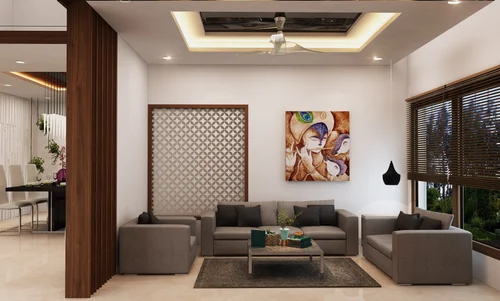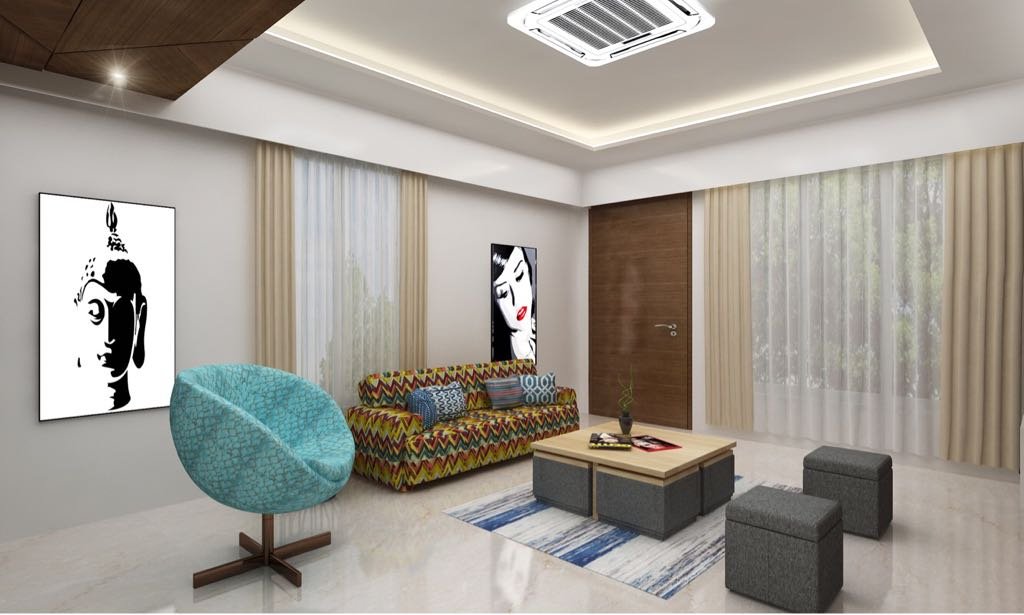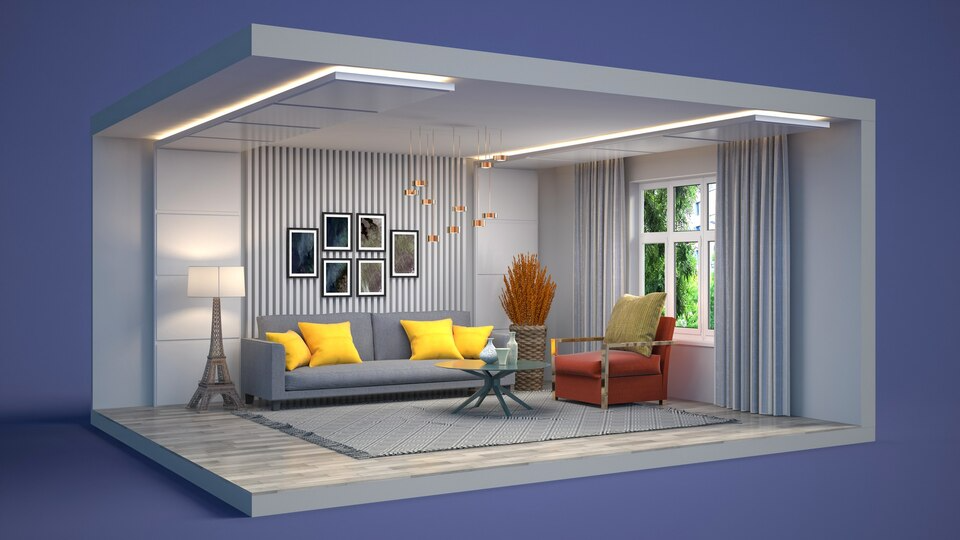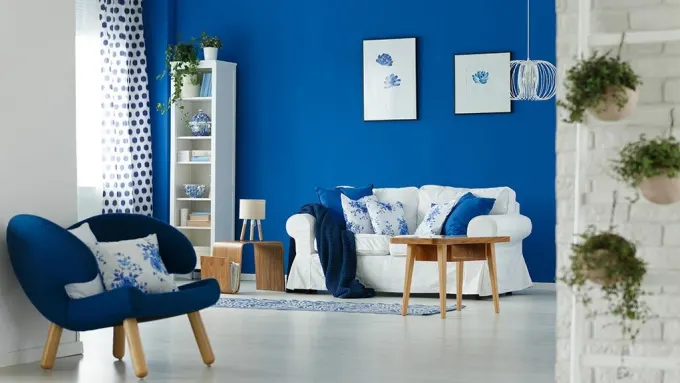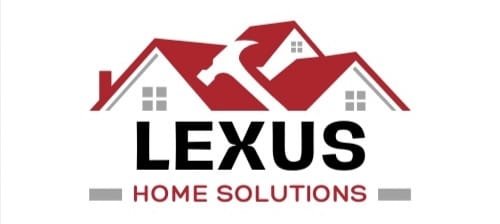Contemporary Interior Design
Contemporary interior design is about creating a space that is both stylish and functional, reflecting the current trends and technologies. It’s a versatile style that can be adapted to different tastes and lifestyles, making it a popular choice for many homeowners.
- Clean Lines and Minimalism: Emphasis on simplicity and functionality. Spaces are uncluttered with minimal decorative elements.
- Neutral Color Palettes: Predominantly uses neutral colors such as white, black, gray, and beige, often accented with bold colors.
- Open Spaces: Layouts are open and airy, promoting a sense of flow and light.
- Natural Light: Large windows and skylights are common to maximize natural light.
- Use of Natural Materials: Incorporates wood, stone, and metal, often in their natural state.
- Focus on Form and Function: Furniture and decor are chosen for both their aesthetic appeal and practical use.
- Incorporation of Modern Technology: Seamlessly integrates the latest technology for convenience and efficiency.

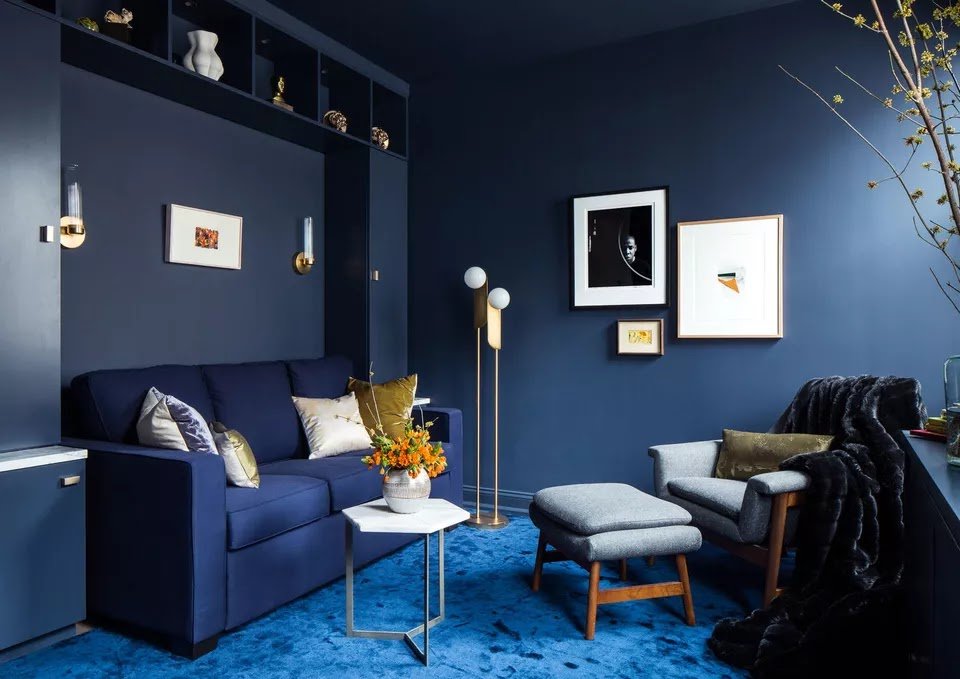
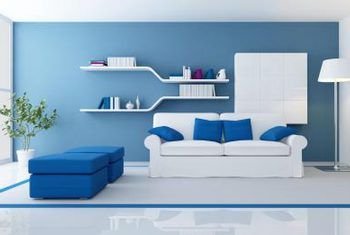
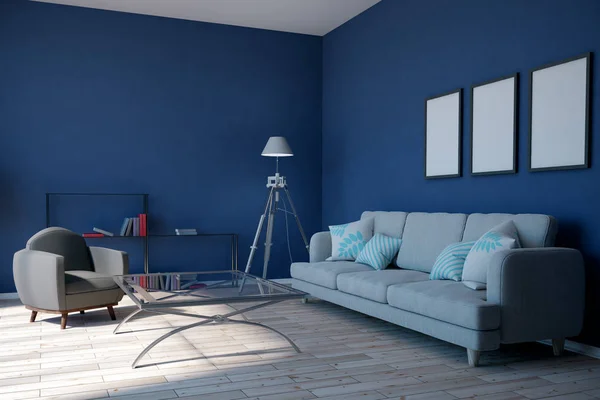
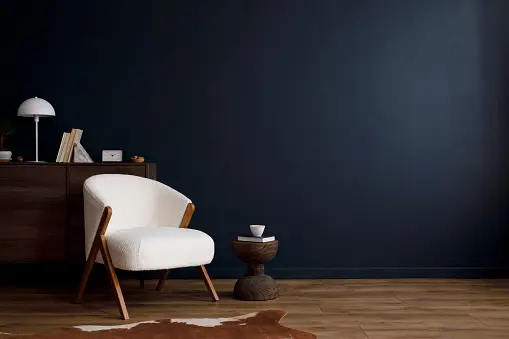
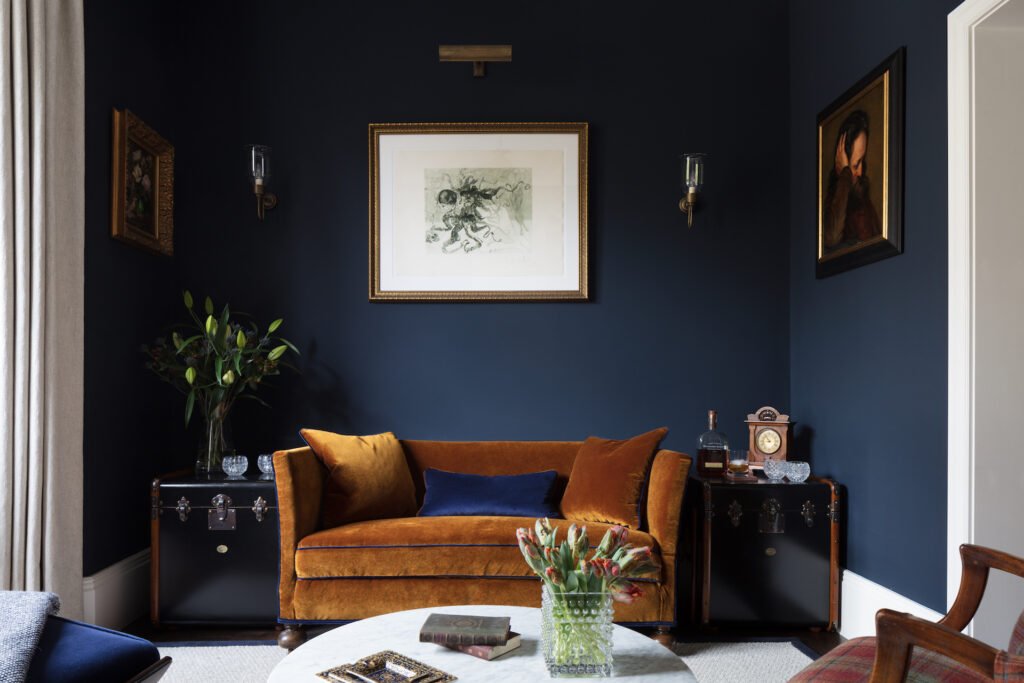
Modern Interior Design
Modern interior design is characterized by a clean, unadorned style that emphasizes functionality and simplicity. This design philosophy emerged in the early to mid-20th century and remains popular today due to its timeless appeal and practicality.
- Clean Lines and Geometric Shapes: Modern design favors straight lines and geometric forms over ornate details. This creates a streamlined, uncluttered look.
- Neutral and Natural Color Palette: Colors such as white, gray, black, and beige dominate, with bold colors used sparingly as accents.
- Open Floor Plans: Spaces are designed to be open and airy, promoting a sense of flow and connectivity.
- Minimalist Approach: Less is more in modern design. Every piece of furniture and decor serves a purpose, and there is a focus on keeping spaces uncluttered.
- Natural Materials: Wood, metal, leather, and natural fibers are commonly used. These materials are often presented in their natural state or with minimal treatment.
- Functionality and Practicality: Modern interiors prioritize function. Furniture and decor are not only aesthetically pleasing but also serve practical purposes.
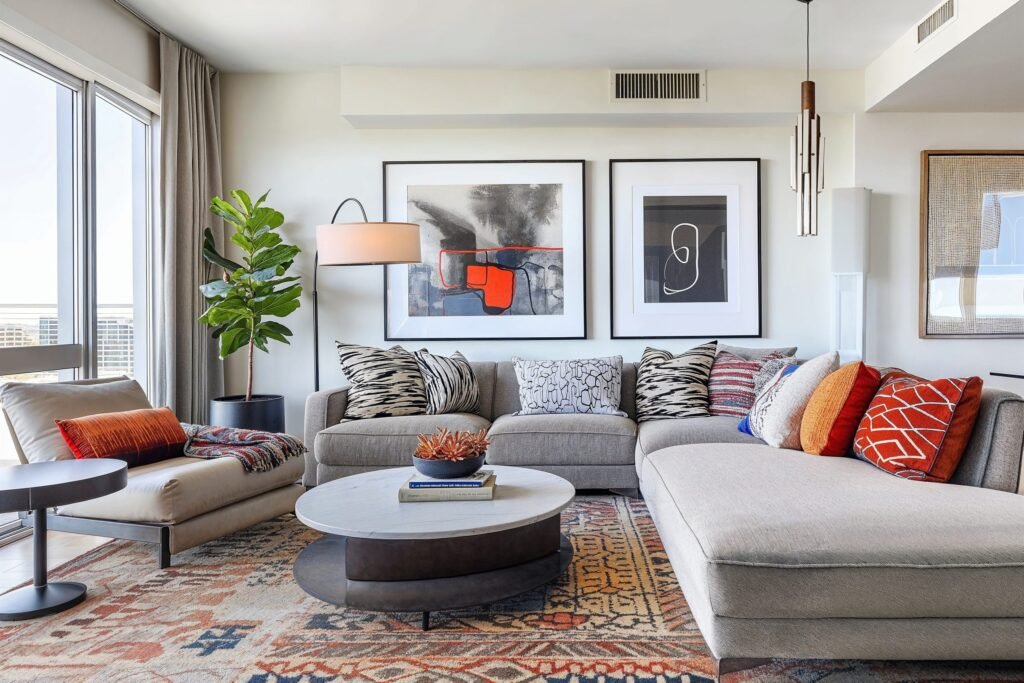


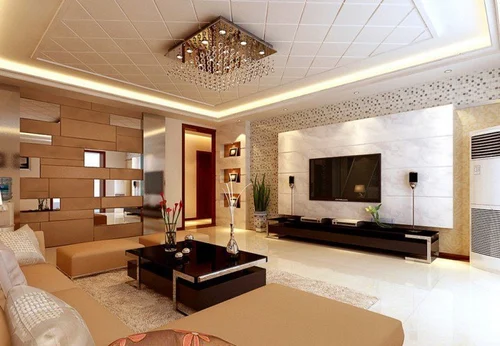

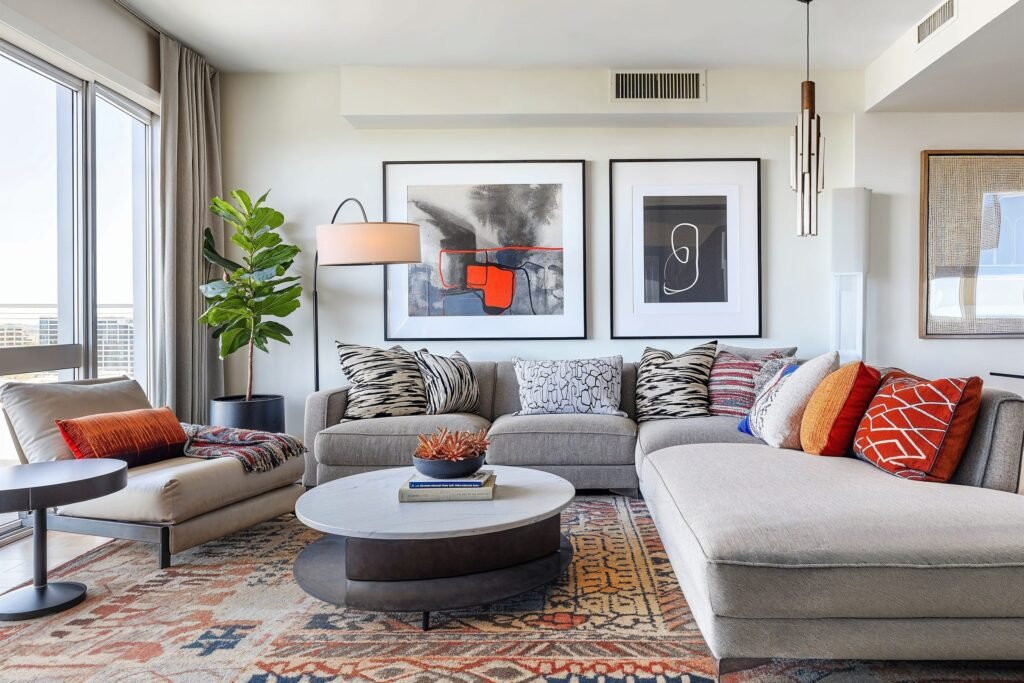
Industrial Interior Design
Industrial interior design is inspired by the raw, unfinished look of factories and warehouses. It embraces a utilitarian aesthetic, highlighting structural elements that are typically concealed. This style is known for its rugged, edgy appeal, making it popular in urban areas and loft-style living spaces.
- Exposed Structures: Elements such as beams, ducts, pipes, and brick walls are left visible, adding to the raw, unfinished look.
- Neutral and Earthy Color Palette: Colors like gray, black, white, and shades of brown dominate, often complemented by metallic tones.
- Open Spaces: Industrial design favors open floor plans with minimal partitions, reflecting the expansive nature of industrial buildings.
- Raw Materials: Utilizes materials such as wood, metal, concrete, and brick in their natural or minimally treated state.
- Functional Furniture: Emphasis on practical, sturdy furniture that often features a mix of metal and wood.
- Vintage and Reclaimed Items: Incorporates vintage or reclaimed pieces, adding character and a sense of history to the space.
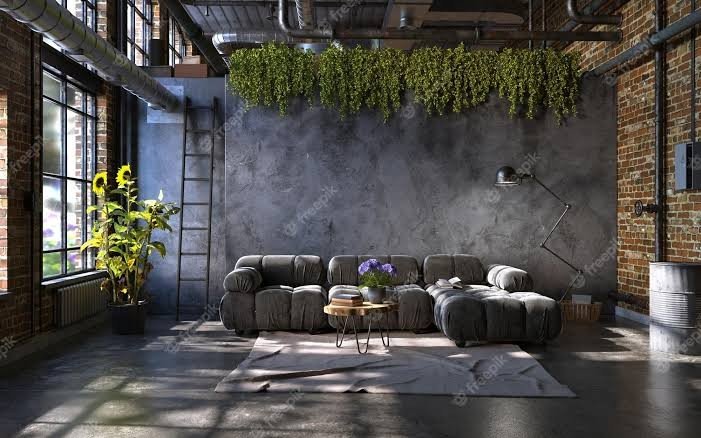

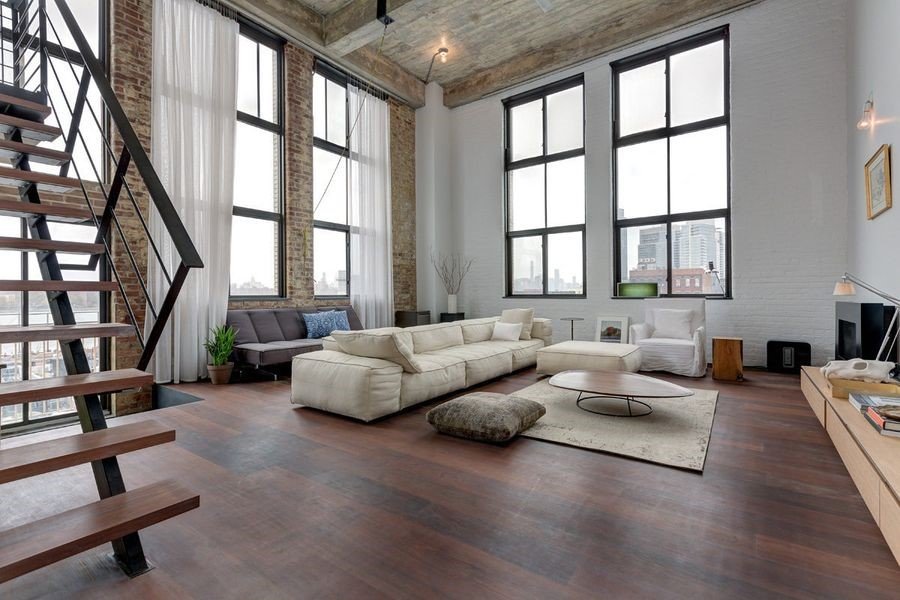
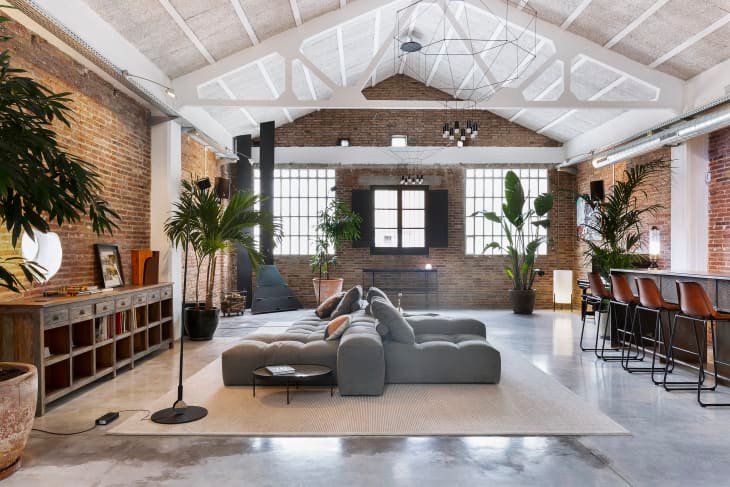
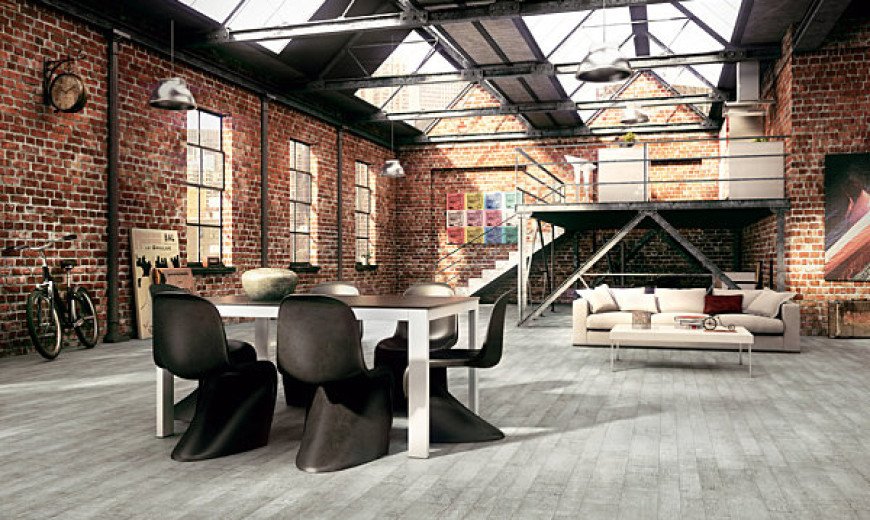
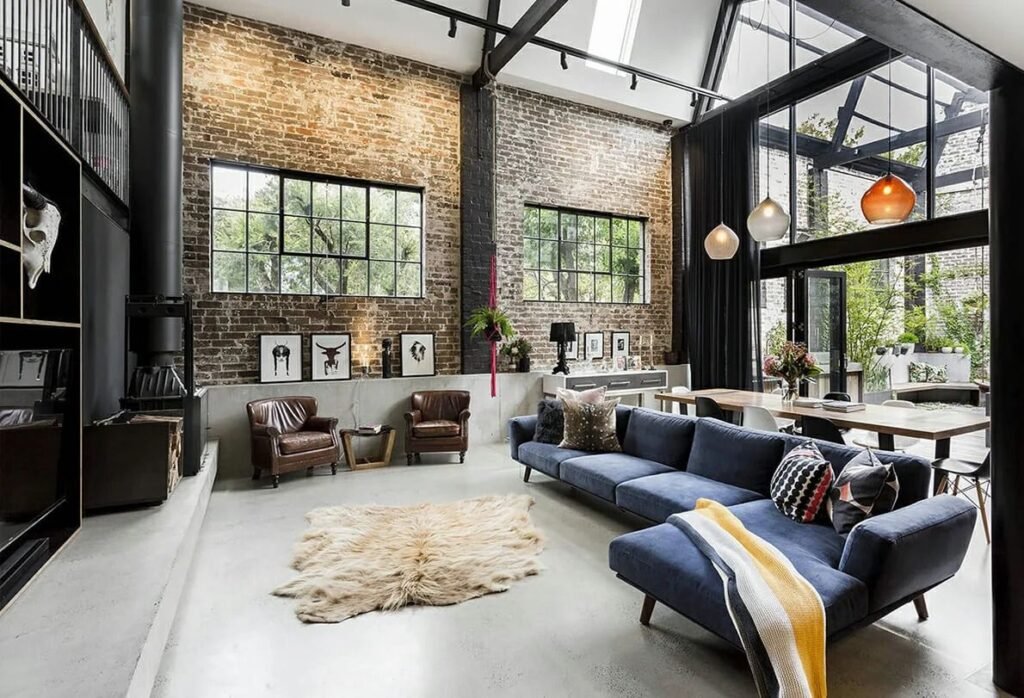
Art deco Interior Design
Art Deco interior design, which flourished in the 1920s and 1930s, is known for its bold, glamorous, and luxurious style. It combines modernist styles with fine craftsmanship and rich materials. Art Deco is characterized by its use of geometric patterns, symmetry, and a sense of opulence.
- Geometric Shapes and Patterns: Strong geometric patterns, zigzags, chevrons, and sunburst motifs are common.
- Bold Colors and Contrasts: Rich, vibrant colors like gold, silver, black, and red are often contrasted with neutrals to create a dramatic effect.
- Luxurious Materials: Use of high-quality, luxurious materials such as marble, ebony, lacquer, stainless steel, and glass.
- Symmetry and Repetition: Designs often emphasize balance and symmetry, with repeated motifs and patterns.
- Opulent Decor: Features glamorous, statement pieces like ornate mirrors, chandeliers, and sculptures.
- Streamlined Silhouettes: Sleek, clean lines and curved forms are prominent in furniture and architecture.
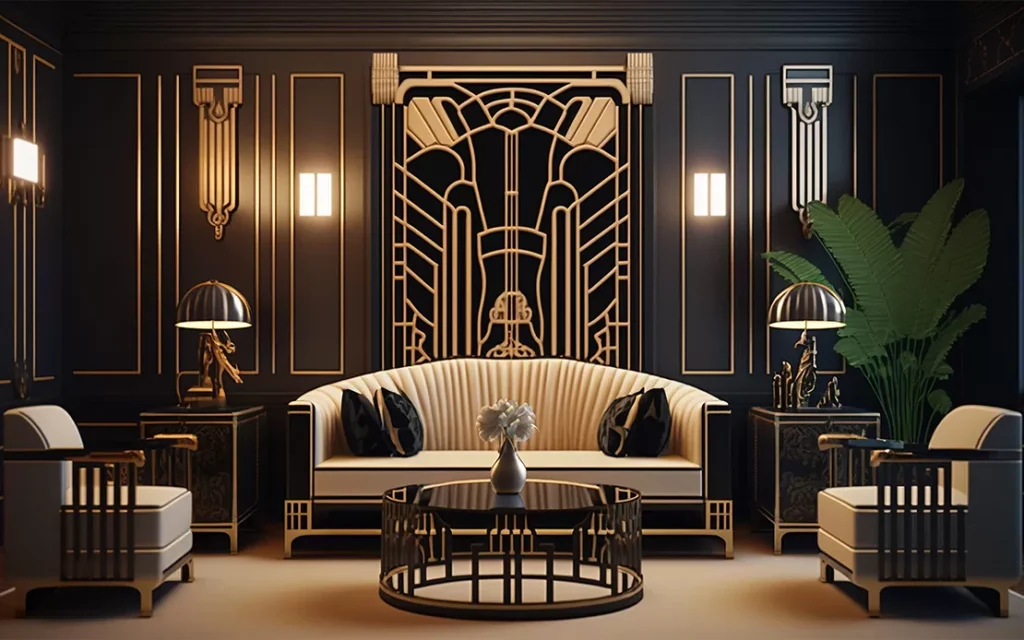
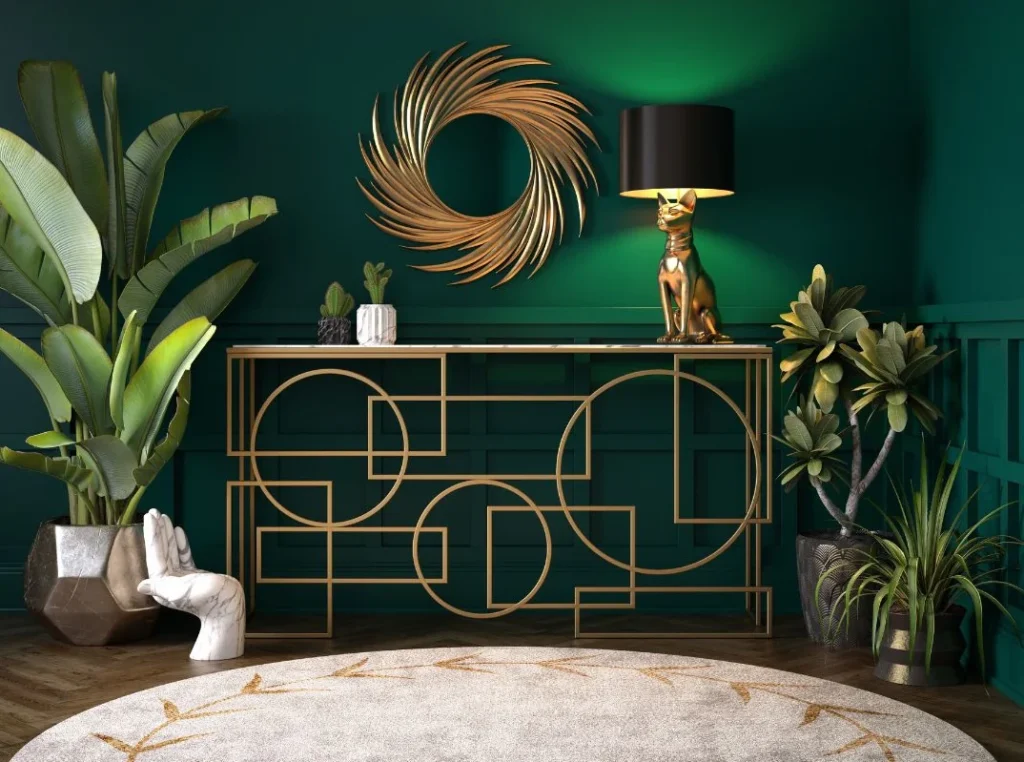

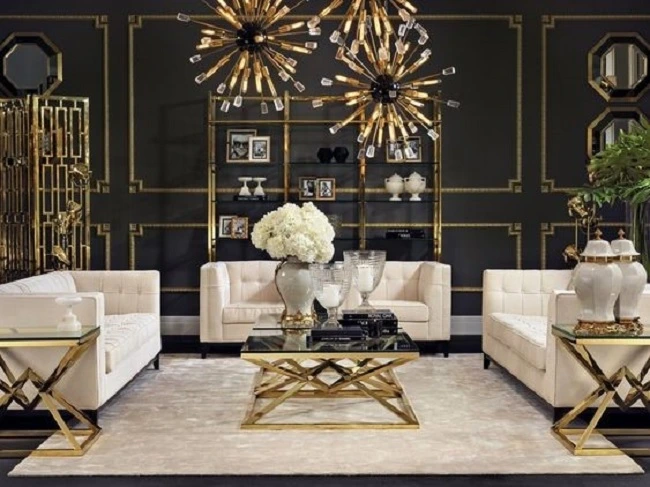

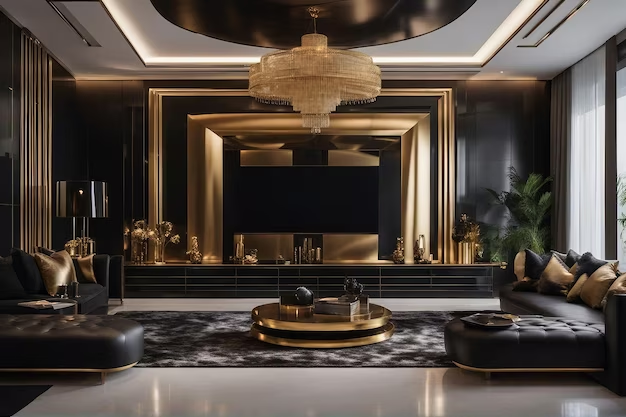
Several Interior Design
Mid-Century Modern Interior Design
Key Features:
- Clean lines and minimalist forms
- Organic shapes and gentle curves
- Functionality and simplicity
- Mix of natural and synthetic materials
- Bold, contrasting colors and graphic patterns
Popular Elements:
- Furniture: Iconic pieces like the Eames lounge chair, tulip tables, and teak wood furnishings
- Decor: Abstract art, sunburst clocks, and geometric textiles
- Lighting: Arc floor lamps, pendant lights, and sputnik chandeliers
2. Scandinavian Interior Design
Key Features:
- Light, neutral color palettes
- Emphasis on natural light and open spaces
- Simple, functional furniture
- Natural materials like wood, wool, and leather
- Minimalist decor with a focus on functionality
Popular Elements:
- Furniture: Simple, functional designs made from light wood
- Decor: Sheepskin rugs, woven baskets, and minimalist art
- Lighting: Simple, functional lighting fixtures, often in white or metallic finishes
3. Bohemian (Boho) Interior Design
Key Features:
- Eclectic mix of colors, patterns, and textures
- Use of natural and handcrafted materials
- Layered textiles and soft furnishings
- Global and vintage influences
- Relaxed, lived-in feel
Popular Elements:
- Furniture: Mismatched pieces, vintage finds, and low-level seating
- Decor: Macramé wall hangings, kilim rugs, and an abundance of plants
- Lighting: Lanterns, fairy lights, and eclectic lamps
4. Minimalist Interior Design
Key Features:
- Focus on simplicity and functionality
- Neutral color palettes, often white or shades of gray
- Clean lines and uncluttered spaces
- Minimal decor and furniture
- Emphasis on open spaces and natural light
Popular Elements:
- Furniture: Simple, functional designs with clean lines
- Decor: Minimalist art, functional accessories, and few decorative items
- Lighting: Simple, understated fixtures that blend into the space
5. Traditional Interior Design
Key Features:
- Classic and timeless style
- Rich colors and luxurious materials
- Ornate details and craftsmanship
- Symmetrical layouts and balanced designs
- Use of antiques and historical elements
Popular Elements:
- Furniture: Classic pieces with detailed carvings and rich upholstery
- Decor: Heavy drapes, Persian rugs, and elegant chandeliers
- Lighting: Traditional lamps, wall sconces, and crystal chandeliers
6. Coastal Interior Design
Key Features:
- Light and airy feel
- Soft, neutral color palettes with blues and greens
- Natural materials like wood, rattan, and linen
- Nautical and beach-inspired decor
- Emphasis on natural light and open spaces
Popular Elements:
- Furniture: Casual, comfortable pieces made from natural materials
- Decor: Seashells, driftwood, and nautical-themed accessories
- Lighting: Light, breezy fixtures like lanterns and coastal-inspired lamps
7. Rustic Interior Design
Key Features:
- Warm, earthy color palettes
- Use of natural, raw materials like wood and stone
- Cozy, comfortable furnishings
- Emphasis on craftsmanship and handmade items
- Vintage and weathered decor
Popular Elements:
- Furniture: Sturdy, handcrafted pieces with a distressed finish
- Decor: Woven textiles, vintage accessories, and natural elements
- Lighting: Rustic fixtures like wrought iron chandeliers and lantern-style lamps
8. Contemporary Interior Design
Key Features:
- Clean lines and minimalism
- Neutral color palettes with bold accents
- Open, airy spaces
- Use of natural light and large windows
- Functional and stylish furniture
Popular Elements:
- Furniture: Sleek, simple designs with an emphasis on functionality
- Decor: Minimalist art, statement pieces, and modern accessories
- Lighting: Modern fixtures like track lighting and pendant lights
9. Industrial Interior Design
Key Features:
- Exposed structural elements like beams and pipes
- Raw, unfinished materials like brick, metal, and wood
- Neutral color palettes with earthy tones
- Functional, utilitarian furniture
- Open, spacious layouts
Popular Elements:
- Furniture: Simple, robust pieces often made from metal and wood
- Decor: Vintage industrial accessories, metal wall art, and reclaimed items
- Lighting: Industrial-style fixtures like metal pendants and Edison bulbs
10. Farmhouse Interior Design
Key Features:
- Cozy, welcoming atmosphere
- Use of natural materials like wood and stone
- Neutral color palettes with warm accents
- Vintage and rustic decor
- Emphasis on comfort and functionality
Popular Elements:
- Furniture: Sturdy, comfortable pieces with a rustic finish
- Decor: Woven textiles, vintage accessories, and farmhouse-style signs
- Lighting: Rustic fixtures like lanterns and farmhouse chandeliers

